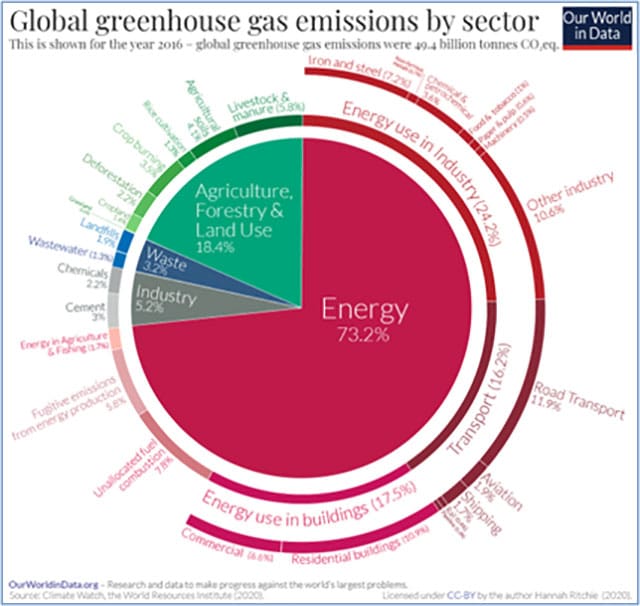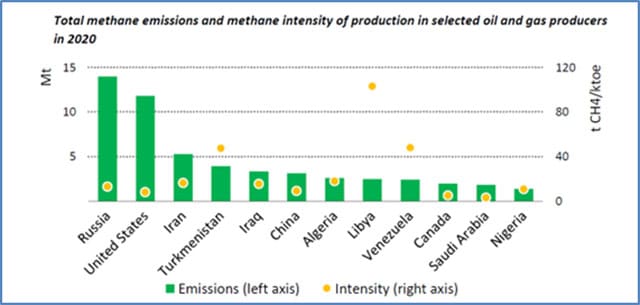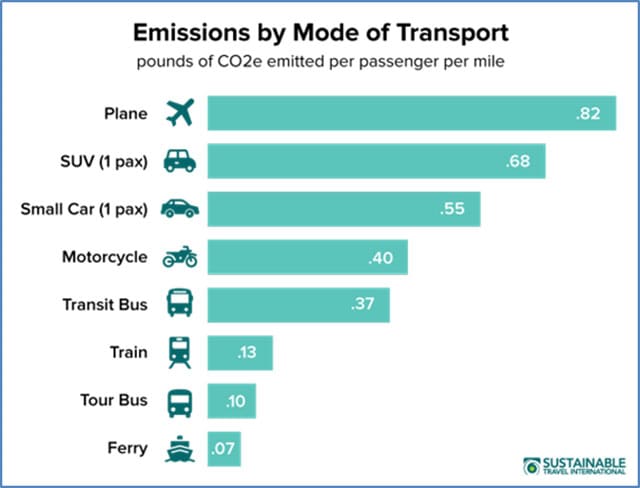Achieving net-zero GHG emissions is crucial in the fight against climate change
 Achieving net-zero emissions is a critical goal in the fight against climate change. It refers to the balance between the amount of greenhouse gases (GHG) emitted into the atmosphere and the amount removed. A comprehensive set of energy transition actions is required to reach net-zero:
Achieving net-zero emissions is a critical goal in the fight against climate change. It refers to the balance between the amount of greenhouse gases (GHG) emitted into the atmosphere and the amount removed. A comprehensive set of energy transition actions is required to reach net-zero:
- Across most sectors of the economy.
- By almost all nations of the world.
- With leadership from various multi-national organizations.
The cacophony of net-zero proponents and skeptics has become disorienting and demotivating for many. The usual debates about who should pay, how soon the goal must be achieved, and how close to net-zero is required often distract from action.
Components of a feasible net-zero implementation
 |
| Related Stories |
| Wood-fired ovens under attack in the push for decarbonization
|
| The sooner we face the realities of Not-Zero the better
|
| Climate change a threat to Prairie agriculture
|
I favour a net-zero implementation plan consisting of these components designed to avoid public debt and create a pace of change that households and businesses can absorb:
- A significant revenue-neutral carbon tax.
- No subsidies for EVs or their cousins, changes to production technologies, or critical minerals.
- The definition of renewable electricity generation is broad and includes geothermal, nuclear, solar, storage, tidal, and wind.
- No subsidies for designing, building and operating renewable electricity generation.
- No fossil fuel electricity generation will be decommissioned before the end of the station’s life.
- No dispatch preferences for renewable electricity.
- Import duties for products that can’t demonstrate an acceptable action level to reduce GHG emissions.
- Subsidies for basic research into GHG reduction technologies.
- Revisions to building codes to reduce energy consumption and GHG production.
- Modest tax credits for investments that reduce GHG emissions.
- Annual motor vehicle licence fees that are proportional to horsepower.
Setting target dates for achieving net-zero is a distracting and misleading fantasy because the elapsed time required to make material progress on the actions listed below is unknown. Pushing for faster action with enormous subsidies and draconian regulations is more likely to be costly and disruptive than helpful.
The text and charts below illustrate the enormity of the net-zero challenge.
Decarbonizing the energy sector
The fossil fuel energy production and consumption sectors contribute 73 percent to GHG emissions in the Global GHG emissions by Sector chart below. Transitioning fossil fuel-based energy consumption to renewable and clean energy alternatives is essential to achieve net-zero emissions. This transition involves rapidly scaling up the deployment of all forms of electricity production and management, including:
- Geothermal, hydro, nuclear, solar, tidal and wind electricity generation.
- Advanced electricity storage technologies and distribution grid infrastructure.
- Electricity grid interconnects to use intermittent renewable electricity better and increase electricity reliability.
This transition is a mammoth undertaking with multiple risks that will take many years and require annual investments in the $ billions. Fossil fuels are pervasive because of their many advantages, including low cost and high energy density.
The chart below provides a summary view of GHG emissions sources across all sectors of the global economy.

Source: Global GHG emissions by Sector, OurWorldinData, November 6, 2020
Fossil fuel production contributes six percent to GHG emissions in the Global GHG emissions by Sector chart above. Production will continue for the foreseeable future well beyond when net-zero emissions are achieved. The industry has reduced GHG emissions intensity per barrel produced and continues to reduce its emissions. However, a few countries can improve their performance significantly, as illustrated in the methane emissions chart below. Improvements consist of turning methane venting into flaring and turning flaring into sales.

Source: IEA says oil, gas methane emissions down 10 percent in 2020 as output fell, Reuters, January 17, 2021
Criticizing energy investors or encouraging divestment does not advance the energy transition and may lead to electricity outages.
Electrification of transportation
Transportation generates 16 percent of total GHG emissions, as illustrated by the Global GHG emissions by Sector chart above. Shifting from internal combustion engine (ICE) vehicles to electric vehicles (EVs), hybrids and other modes of transportation is crucial. This transition requires:
- The widespread deployment of EVs and hybrids.
- Research and development to enhance battery performance while reducing cost and weight.
- Significant mining investment for critical minerals.
- Considerable elapsed time for mine permitting and construction.
It does not require the following:
- More than a modest charging infrastructure because most usage is for commuting. Most commuters can charge EVs overnight at home.
- Financial incentives for EV adoption because most vehicle owners buy a new vehicle every few years, and the incremental cost for EVs is narrowing.
Promoting sustainable modes of transport, such as walking, cycling, ride-sharing, and public transit, can further reduce GHG emissions.
Reducing the GHG emissions from commercial trucking can be addressed by transitioning:
- Long-distance trucks to hydrogen. Batteries are not feasible due to their weight.
- Some truckloads to railways.
- Short-distance trucks to batteries.
Reducing the GHG emissions from freight railways can be addressed by transitioning some high-traffic rail lines to:
- Electricity, as is the case in Europe.
- Hydrogen
Focusing the transition exclusively on EVs while excluding or ignoring hybrids, hydrogen, LPG, and lower-power, improved efficiency ICEs will most likely extend the transition.
This chart compares CO2 emissions for various transportation modes using fossil fuels. Bicycles and walking emit nothing.

Source: Carbon Footprint of Tourism
Expanding the forms of transportation with low or no CO2 emissions requires redeveloping urban infrastructure toward the “15-minute city” concept, which will take time.
This article is part 1 of a three-part series. Part 2 will be published next week.
Yogi Schulz has over 40 years of information technology experience in various industries. Yogi works extensively in the petroleum industry. He manages projects that arise from changes in business requirements, the need to leverage technology opportunities, and mergers. His specialties include IT strategy, web strategy and project management.
For interview requests, click here.
The opinions expressed by our columnists and contributors are theirs alone and do not inherently or expressly reflect the views of our publication.
© Troy Media
Troy Media is an editorial content provider to media outlets and its own hosted community news outlets across Canada.

